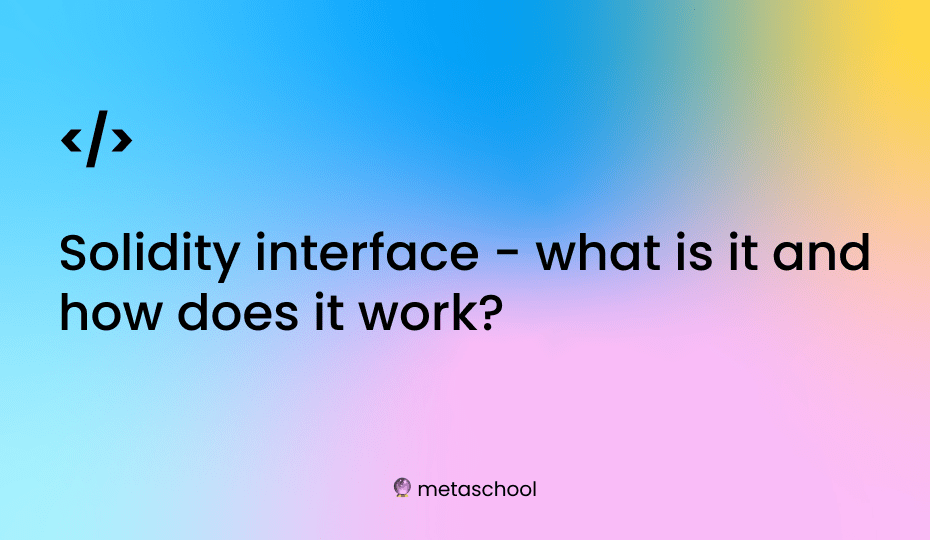Table of Contents
In Solidity, an interface is a special type of contract that defines a set of functions that other contracts can implement.
What is it?
An interface defines the signatures of the functions, but not their implementations. This means that an interface specifies what a contract must do, but not how it does it.
Interfaces are useful because they allow contracts to be written in a modular and reusable way. By defining a Solidity interface, you can specify a contract’s external behavior and allow other contracts to implement that behavior in any way they choose. This makes it possible to write smart contracts that can be used in different contexts and can be easily extended or modified.
Here is an example of an interface in Solidity:
interface Token {
function transfer(address _to, uint256 _value) external;
function balanceOf(address _owner) external view returns (uint256);
}In this example, the Token interface defines two functions: transfer and balanceOf. These functions have specific signatures, which means that they have specific parameter types and return types. The transfer function takes two arguments: an address and a uint256. The balanceOf function takes one argument: an address. Both functions also have the external visibility modifier, which means that they can be called from outside the contract.
How to implement an interface in a Solidity contract
To implement an interface in a contract, you can use the is keyword followed by the interface name. Here is an example of a smart contract that implements the Token interface:
Copy codecontract MyToken is Token {
function transfer(address _to, uint256 _value) external {
// Implement the transfer function here
}
function balanceOf(address _owner) external view returns (uint256) {
// Implement the balanceOf function here
}
}
In this example, the MyToken contract implements the Token interface by defining functions with the same names and signatures as the functions in the interface. This means that the MyToken contract can be used in any context where a Token contract is expected, because it implements the same external behavior as defined by the interface.
To conclude, an interface in Solidity is a special type of contract that defines a set of functions that other contracts can implement. Interfaces allow contracts to be written in a modular and reusable way, and they are useful for specifying a contract’s external behavior. To implement an interface in a contract, you can use the is keyword followed by the interface name.
